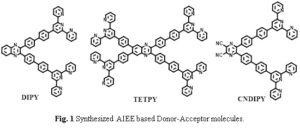One needs to seek nature in order to get the idea of sustainability either in daily life or in the chemistry lab. We have been learning since our childhood about plants survival via photosynthesis and humans survival by oxygen. The sun has been the ultimate powerhouse for all the beings on earth.
Photosynthesis is the apotheosis of sustainable chemical reactivity and the sun is one of the main pinnacles towards the target of green chemistry. In the context of sustainable synthetic approaches, photoredox chemistry has emerged as a scientific toolbox for organic transformations due to the tremendous ability to generate reactive intermediates under mild reaction conditions.
Photoredox catalysis depends upon the photoexcitation with visible light to facilitate single electron transfer (SET) and the generation of other intermediates. Sunlight energy could be the essential source for this cause owing to its free, non-toxic and environmentally benign nature. These benefits make photoredox catalysis valuable when designing new catalytic systems with sustainable approaches. However, there are other sources for the photoexcitation although they pose limitations due to high energy requirements and formation of side products. Even though photoredox catalysis has provided powerful methods in synthesis, the cost of photocatalysts and cost of light sources and environmental aspects on the synthesis are yet to be considered.
With the help of a broad range of molecules synthesized in our lab, modeling and utilization, we have been able to understand the potential of molecules for their photoredox catalytic activity. Considering this situation, my recent research focuses on the synthesis of molecules with strong visible range absorption and utilization of sunlight for photoexcitation to carry out various organic transformations via photoredox chemistry. By smartly incorporating the donor and acceptor groups, we are able to synthesize molecules with absorption in the visible region (Fig. 1).
My focus is on understanding the potential of the molecules to catalyze reactions with low energy radiations i.e. solar-driven. The synthesized molecules have been subjected to various experiments and found to be active towards aggregation-induced emission enhancement (AIEE) and solvatochromism phenomenon, reactive oxygen species generation as well as displayed catalytic activity towards reactions such as (i) oxidative homocoupling of benzyl amines (ii) additive free oxidative amidation of aldehydes and (iii) hydroxylation of boronic acids under the presence of sunlight. All you need to get a good transformation is chemicals, a stirrer and the sun. Our group continue to address challenges in this field, exploring more solar-driven chemical transformations.
To find out more, please read:
AIEE Active Nanoassemblies of Pyrazine Based Organic Photosensitizers as Efficient Metal-Free Supramolecular Photoredox Catalytic Systems
Scientific. Reports,2019, 9:1114.
About the Web Writer:
 Shruti Dadwal is a Ph.D. candidate in organic chemistry under the supervision of Dr. Vandana Bhalla at Guru Nanak Dev University, Amritsar, India; where she also completed her B.Sc and first class M.Sc in Hons. School Chemistry. Her research focuses on developing new and better donor-acceptor based molecules for sensing, photocatalysis and nanocatalysis. She enjoys music, writing and travelling. You can find her on Twitter @DadwalShrutii.
Shruti Dadwal is a Ph.D. candidate in organic chemistry under the supervision of Dr. Vandana Bhalla at Guru Nanak Dev University, Amritsar, India; where she also completed her B.Sc and first class M.Sc in Hons. School Chemistry. Her research focuses on developing new and better donor-acceptor based molecules for sensing, photocatalysis and nanocatalysis. She enjoys music, writing and travelling. You can find her on Twitter @DadwalShrutii.
 Submit to RSC Advances today! Check out our author guidelines for information on our article types or find out more about the advantages of publishing in a Royal Society of Chemistry journal.
Submit to RSC Advances today! Check out our author guidelines for information on our article types or find out more about the advantages of publishing in a Royal Society of Chemistry journal.
Keep up to date with our latest HOT articles, Reviews, Collections & more by following us on Twitter. You can also keep informed by signing up to our E-Alerts.











